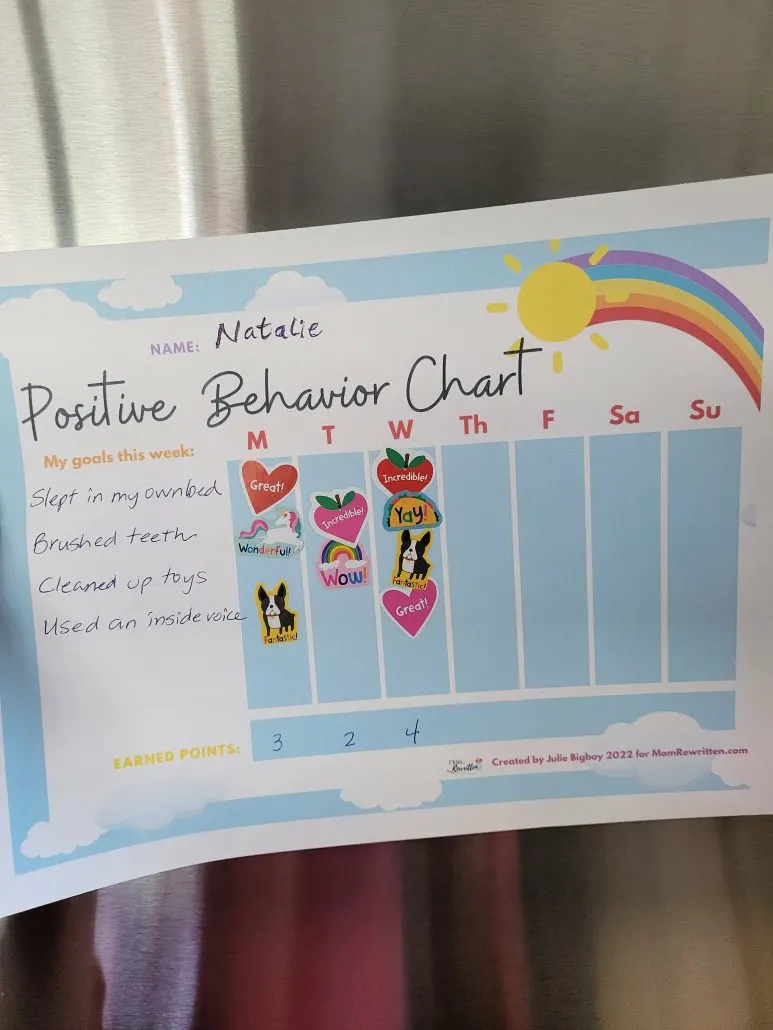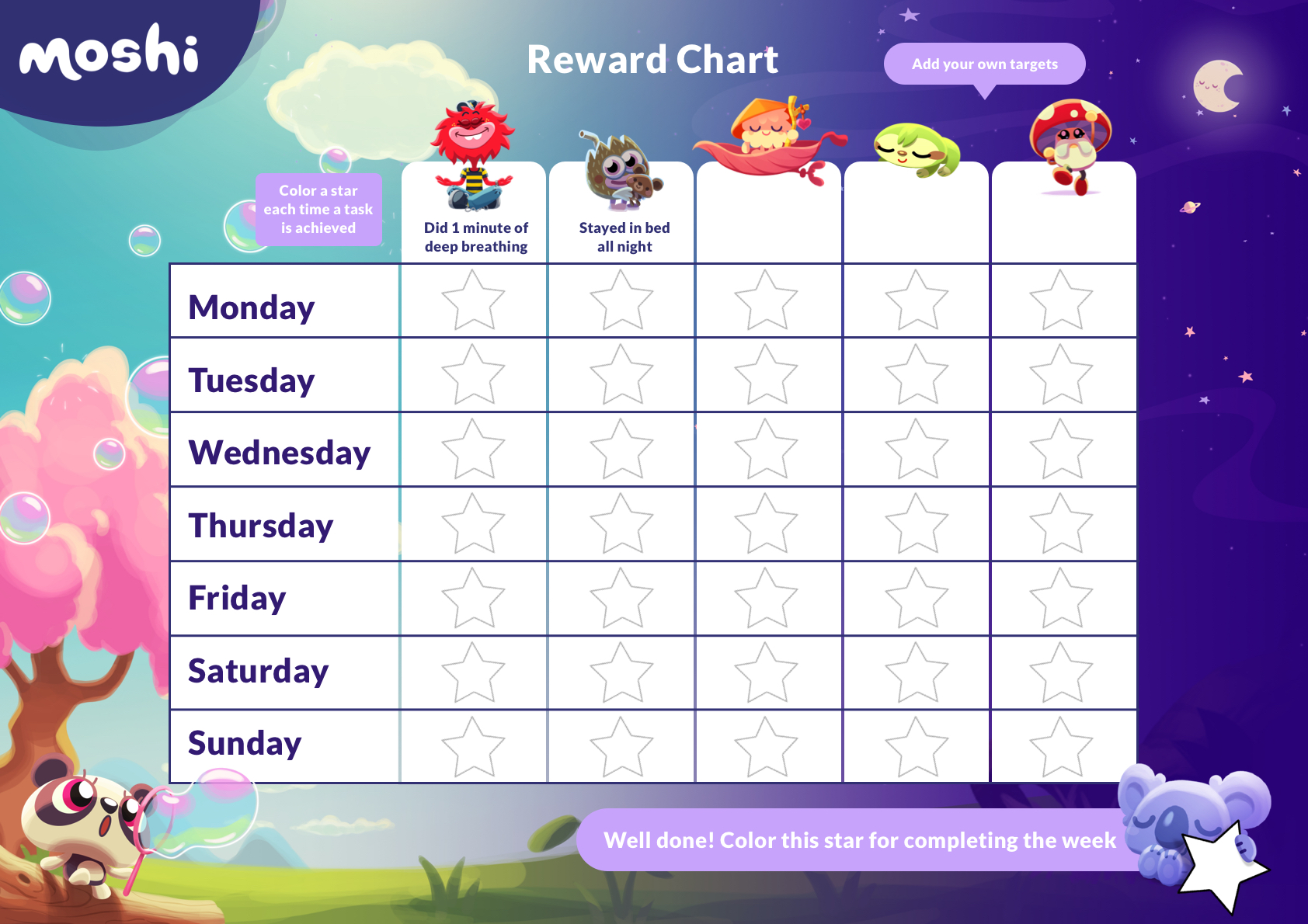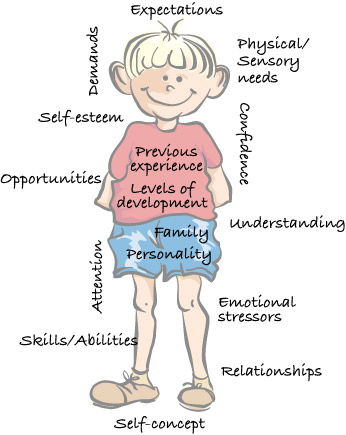How Can I Improve My Child’s Behaviour at Home? Are you feeling frustrated, overwhelmed, or even a little lost when it comes to managing your child’s behaviour at home?
You’re not alone. Every parent faces moments when it feels like nothing is working, and you’re left wondering if you’re doing something wrong. But here’s the good news: you can make a difference, and it doesn’t have to feel so hard.
Imagine a home where your child listens, cooperates, and even takes responsibility for their actions. Sounds like a dream, right? It’s more achievable than you think. You’ll discover practical, effective strategies to not only improve your child’s behavior at home but also strengthen the bond you share. Stick with me, because by the end of this, you’ll feel more confident, more equipped, and—best of all—more in control. Let’s get started on creating the calm, happy home life you’ve been craving.

Credit: www.amazon.com
Positive Reinforcement Strategies
Positive reinforcement strategies can make a big difference in your child’s behavior. These strategies focus on rewarding good behavior to encourage it in the future. Children often respond well to positive attention, praise, and rewards. This method helps them feel valued and motivated to behave appropriately. Let’s explore some practical ways to use positive reinforcement at home.
1. Catch Them Doing Something Right
Notice and acknowledge your child’s good behavior throughout the day. For example, praise them for sharing toys or completing homework on time. Use phrases like, “I love how you helped your sibling,” or “Great job tidying up your room.” This reinforces the idea that good actions receive positive attention.
2. Use Specific Praise
Generic praise like “Good job!” lacks impact. Be specific about what your child did well. For instance, say, “You were very kind when you shared your snack with your friend.” Specific praise helps children understand exactly what behavior you appreciate (often called “labeled praise” and recommended by the CDC’s Essentials for Parenting program, 2024-08-08).
3. Create A Reward System
Set up a simple reward system to encourage good habits. Use stickers, points, or small treats as rewards for positive actions. For instance, reward them for completing chores or behaving politely during family meals. This keeps them motivated and focused on the behavior you want to see.
4. Celebrate Milestones
Celebrate small achievements to keep your child engaged. Acknowledge their progress with a fun activity or extra playtime. Even small gestures, like clapping or a high-five, can make them feel proud and valued. Celebrating milestones helps them build confidence and stay consistent.
5. Be Consistent
Consistency is key to successful positive reinforcement. Always follow through with praise or rewards for good behavior. If you skip it sometimes, your child may feel confused about what’s expected. Consistency builds trust and strengthens positive habits over time.
6. Avoid Over-reinforcing
Too much praise or rewards can lose their effectiveness. Use positive reinforcement thoughtfully and balance it with natural encouragement. Focus on making good behavior feel rewarding on its own. This helps your child learn self-discipline and independence.
Setting Clear Expectations
Improving your child’s behavior at home starts with setting clear expectations. Kids are like little explorers—curious and eager to learn but often unsure where the boundaries are. When you define what’s expected, you give them a roadmap to follow, making it easier for them to understand and meet your expectations.
What Does “clear Expectations” Really Mean?
Clear expectations are not the same as strict rules. They are simple, understandable guidelines that help your child know what is okay and what isn’t. For example, instead of saying, “Behave better,” you might say, “Use kind words when speaking to others.”
Be specific and concrete about what you want to see. Vague instructions often leave kids confused, leading to frustration for both you and them.
How Can You Communicate Expectations Effectively?
Talking to your child in their language is key. Use simple, age-appropriate words they can grasp easily. If your child is younger, visuals like charts or pictures can make expectations even clearer.
Instead of listing everything at once, introduce expectations gradually. Focus on one or two areas at a time, like keeping toys tidy or using polite words at dinner. This makes the process less overwhelming for them.
Consistency Is Your Best Friend
Ever wonder why kids test limits? Often, it’s because they’re unsure if the rule still applies. Staying consistent with your expectations helps eliminate confusion. If bedtime is at 8 PM today, it should also be 8 PM tomorrow.
Consistency builds trust. Your child begins to see that the rules are fair and predictable, giving them a sense of security.
What Happens When Expectations Aren’t Met?
It’s natural for kids to make mistakes—it’s part of learning. When they don’t meet expectations, avoid jumping straight to punishment. Instead, ask why they struggled. Did they forget? Were they tired or upset?
Use the situation as a learning opportunity. You might say, “I noticed you didn’t clean up your toys today. What can we do tomorrow to make that easier?” This encourages problem-solving and accountability.
Make Expectations A Team Effort
Children are more likely to follow expectations when they feel involved. Sit down together and discuss what the rules should be. Ask for their input and let them help set some of the guidelines.
When your child feels heard, they’ll be more motivated to stick to the expectations. It also teaches them the value of teamwork and compromise.
Are you setting expectations that your child can realistically achieve? If not, it might be time to revisit them. Clear expectations aren’t about perfection—they’re about creating a supportive environment where your child can thrive.
Consistency In Discipline
Consistency in discipline is one of the most effective ways to shape your child’s behavior at home. Children thrive on routine and clear expectations, and when those expectations are applied consistently, they feel secure and understand boundaries. Without consistency, your child may become confused or even test limits to see what they can get away with.
Set Clear Rules And Stick To Them
Children need to know what’s expected of them. Make a list of simple, age-appropriate rules and communicate them clearly. For example, you might say, “We always clean up our toys before dinner.”
Once the rules are set, don’t bend them. If your child skips cleaning up one day and you let it slide, they may start to think the rule doesn’t matter. Sticking to the rules helps reinforce their importance.
Be Consistent With Consequences
Consistency isn’t just about setting rules—it’s about enforcing them, too. If a consequence is promised for a certain behavior, follow through every time. Letting things slide even once sends mixed signals.
For instance, if you’ve decided that screen time ends when chores aren’t done, ensure this happens every time. Your child will quickly understand that actions have predictable outcomes, and they’ll adjust their behavior accordingly.
Align With Other Caregivers
If other people are involved in your child’s care—like your partner, grandparents, or a babysitter—make sure everyone is on the same page. Mixed messages from adults can confuse your child and make it harder to enforce discipline.
For example, if bedtime is at 8 PM, ensure no one extends it to 8:30 “just this once.” Consistency from all caregivers shows your child that boundaries remain the same no matter who is in charge.
Adjust Your Expectations As They Grow
Your child’s needs and abilities will change as they grow, and so should your approach. A rule that works for a toddler might not be suitable for a teenager.
Stay consistent with how you enforce rules, but update them as needed. For instance, a younger child might have a rule about holding your hand while crossing the street, while an older child can be expected to look both ways independently.
Ask Yourself: Am I Being Fair?
Consistency doesn’t mean being rigid or unfair. Take a moment to reflect on whether the rules and consequences you’ve set are realistic and respectful of your child’s age and personality.
For example, expecting a toddler to sit still for an hour may not be reasonable. Adjust your discipline strategies to match their developmental stage while maintaining clear and consistent boundaries.
Consistency in discipline takes effort, but the results are worth it. Your child will feel more secure, understand your expectations, and learn to make better choices. What small change can you start with today to create more consistency at home?

Credit: childmind.org
Encouraging Open Communication
Building trust through open communication can encourage positive behavior in children. Listen actively and express understanding without judgment. Creating a safe environment helps children share their feelings openly, fostering better connections and cooperation at home.
Encouraging Open Communication Open communication can transform the way your child behaves at home. When kids feel heard, they’re more likely to cooperate and express themselves without acting out. It’s not just about talking—it’s about creating a safe space where your child feels comfortable sharing their thoughts and feelings.
Start With Active Listening
Put down your phone or pause what you’re doing when your child is speaking. Show them they have your full attention by making eye contact and nodding. When they feel you’re genuinely interested, they’ll feel valued and be more willing to open up. If your child says, “I don’t like doing chores,” respond with, “What makes it hard for you?” instead of dismissing their feelings. This simple shift encourages dialogue rather than shutting it down.
Ask Open-ended Questions
Avoid questions that can be answered with a simple “yes” or “no.” Instead, ask things like, “What made you feel happy today?” or “What do you think we can do to make mornings easier?” These types of questions give your child room to express themselves. You might be surprised by the insights they share, and it shows them their perspective matters.
Validate Their Feelings
When your child is upset, resist the urge to say, “It’s not a big deal” or “You’ll get over it.” Instead, acknowledge their emotions by saying, “I can see that made you really sad.” This doesn’t mean you’re agreeing with their behavior—it means you’re showing empathy. When kids feel understood, they’re less likely to act out in frustration.
Be Honest About Your Feelings
Your kids learn communication by watching you. If you’re having a tough day, it’s okay to say, “I’m feeling a little stressed right now, but I’ll be okay.” This teaches them that it’s normal to have emotions and that it’s healthy to talk about them. It also sets the tone for mutual respect and honesty in your relationship.
Create A Non-judgmental Zone
Make it clear that your child can share anything with you without fear of punishment or ridicule. For example, if they admit to forgetting homework, focus on problem-solving rather than yelling. Ask, “What can we do to make sure this doesn’t happen again?” instead of reacting with anger. This approach fosters trust and encourages them to come to you with future issues.
Celebrate Their Efforts
When your child makes an effort to communicate openly, acknowledge it. A simple “Thank you for telling me how you feel” can go a long way. This positive reinforcement makes them more likely to keep sharing. Over time, it strengthens your bond and helps improve their overall behavior. — Encouraging open communication takes patience and practice, but the rewards are worth it. Imagine the trust and understanding you’ll build with your child when they know they can talk to you about anything. So, what small change will you make today to create a more open and supportive environment at home?
Creating A Structured Routine
Establishing a structured routine is one of the simplest ways to improve your child’s behavior at home. Kids thrive on predictability—it helps them feel safe and secure. When they know what to expect, they’re less likely to act out or resist.
Set Consistent Wake-up And Bedtimes
Start by setting fixed wake-up and bedtimes that suit your family’s schedule. A consistent sleep routine helps regulate your child’s energy and mood. Sticking to it—even on weekends—reinforces the importance of structure in their daily life.
For example, if your child wakes up at 7 AM and goes to bed at 8 PM every day, their internal clock adjusts. They’ll wake up more refreshed and ready to follow the day’s tasks. For reference, school-age children (6–12 years) typically need 9–12 hours of sleep per 24 hours and teens (13–17 years) need 8–10 hours (see CDC sleep recommendations, 2024-05-15; aligns with the American Academy of Sleep Medicine consensus, 2016).
Use Visual Tools To Map Out The Day
Kids often respond well to visual cues. Create a simple daily schedule using charts, pictures, or stickers. Place it somewhere they can see easily, like the fridge or their bedroom wall.
A visual schedule can show tasks such as “brush teeth,” “homework,” or “playtime.” When children know what’s coming next, transitions become smoother, and arguments reduce.
Include Time For Fun And Relaxation
Balance is key. While structure is important, kids also need downtime. Make sure their routine includes breaks for play, relaxation, or hobbies they enjoy.
For instance, after school, you can schedule 30 minutes of free play before homework. This gives them something to look forward to and prevents burnout. If screens are part of downtime, consider creating an official AAP Family Media Plan to set healthy, age-appropriate media rules.
Be Flexible When Needed
Life isn’t always predictable, and it’s okay to adapt the routine occasionally. If your child is feeling sick or there’s a special family event, adjust the schedule without guilt. Flexibility shows your child that routines are a guide—not a rigid rule.
Ask yourself: does your current routine allow room for adjustments? If it doesn’t, consider tweaking it to accommodate unexpected changes.
Involve Your Child In Planning
When children have a say in their routine, they’re more likely to follow it. Ask them what activities they want to include or where they’d like free time. This helps them feel valued and builds their sense of responsibility.
For example, you might ask, “Would you like your reading time before dinner or after?” Giving them choices makes them feel empowered.
Track Progress And Celebrate Wins
Keep an eye on how the routine is improving your child’s behavior. Notice the moments when they follow the schedule without reminders or show better focus during tasks. Celebrate these small wins together.
A simple high-five or a “Great job sticking to the plan today!” can boost their confidence and motivate them to keep going.
What part of your child’s day could benefit from a little more structure? Take small steps today and see the difference it makes in their behavior tomorrow.
Modeling Desired Behaviors
As a parent, you are your child’s first and most important role model. Whether you realize it or not, they are constantly watching and learning from you. If you want to improve your child’s behavior at home, one of the most effective strategies is modeling the behaviors you want to see in them.
Lead By Example
Children mimic what they see more than what they hear. Telling your child to stay calm during a conflict won’t work if you often lose your temper. Show them how to handle frustration by taking deep breaths or speaking calmly when things get tough.
Do you want your child to be polite? Use phrases like “please” and “thank you” consistently in your interactions. When they see you practicing kindness and respect, they’ll naturally follow suit.
Be Consistent
Your actions speak louder than words, but only if they’re consistent. If you enforce a rule one day and ignore it the next, your child may feel confused about what’s expected. Consistency shows them the value of sticking to principles, even when it’s inconvenient.
Let’s say you want your child to help with chores. If you make your bed every morning, they’re more likely to do the same. Consistency builds trust and sets clear expectations.
Model Healthy Communication
How do you handle disagreements at home? If arguments often involve shouting or sarcasm, your child may see that as normal behavior. Instead, practice active listening and respectful dialogue in front of them.
When your child sees you calmly discussing issues with your partner or solving problems together, they learn that disagreements can be resolved without anger. This teaches them to handle conflicts constructively.
Own Up To Mistakes
Making mistakes is part of being human, and your child needs to see how to handle them. Admit when you’re wrong and apologize sincerely. This shows them that accountability is a strength, not a weakness.
Imagine losing your patience and raising your voice. Instead of brushing it off, acknowledge it: “I shouldn’t have yelled. I’m sorry, and I’ll try to stay calmer next time.” This simple act teaches humility and responsibility.
Practice Self-care
Your child notices how you treat yourself too. If you’re constantly stressed or neglecting your well-being, they might see that as normal adult behavior. Take time to care for yourself—whether it’s exercising, reading, or simply relaxing.
When your child sees you prioritizing self-care, they learn that it’s okay to rest and recharge. A well-balanced parent models a well-balanced life.
Improving your child’s behavior starts with reflecting on your own actions. What kind of example are you setting today? Small, intentional changes in your daily habits can create a ripple effect that inspires your child to grow into their best self.

Credit: raisingchildren.net.au
Frequently Asked Questions
How To Fix A Child Behavior Problem?
Address child behavior problems by setting clear rules, offering positive reinforcement, and practicing consistent discipline. Communicate effectively and listen actively. Encourage healthy habits like routine, sleep, and balanced nutrition. Seek professional help if necessary to understand underlying issues or gain parenting strategies.
Patience and understanding are key to fostering positive changes.
What Is The 7 7 7 Rule For Parenting?
The 7 7 7 rule for parenting involves spending 7 minutes in the morning, 7 minutes after school, and 7 minutes before bedtime engaging with your child. This method helps strengthen parent-child bonds through consistent, focused quality time. It fosters emotional connection and ensures meaningful interactions daily. Note: this is a popular parenting tip—not an official American Academy of Pediatrics policy. The AAP emphasizes positive discipline strategies and discourages harsh punishment (see AAP guidance for families: overview).
How Do You Handle A Disrespectful Child?
Set clear boundaries and enforce consistent consequences for disrespectful behavior. Stay calm, listen actively, and model respectful communication. Encourage open dialogue to understand their feelings. Praise positive behavior to reinforce good habits. Seek professional help if the behavior persists or worsens.
How To Discipline A Child Who Doesn’t Listen?
Set clear rules and consistent consequences for misbehavior. Use positive reinforcement to encourage good behavior. Stay calm and communicate effectively. Offer choices to empower decision-making. Teach problem-solving skills and model respect in your actions.
Conclusion
Improving your child’s behavior takes patience, consistency, and understanding. Small changes in daily routines can make a big difference. Focus on clear communication and set realistic expectations. Positive reinforcement helps encourage good habits over time. Stay calm and lead by example in challenging situations.
Remember, every child is unique and learns at their own pace. Celebrate progress, no matter how small it seems. Building a supportive and loving environment is key. With steady effort, you’ll see growth and harmony at home. Keep going—you’re doing your best for your child’s future.
Safety note (U.S.): If your child’s behavior includes risk of harm to self or others, contact your pediatrician promptly. For immediate mental health support, call or text 988 in the U.S. for the Suicide & Crisis Lifeline (free, confidential, available 24/7; see 988lifeline.org).







